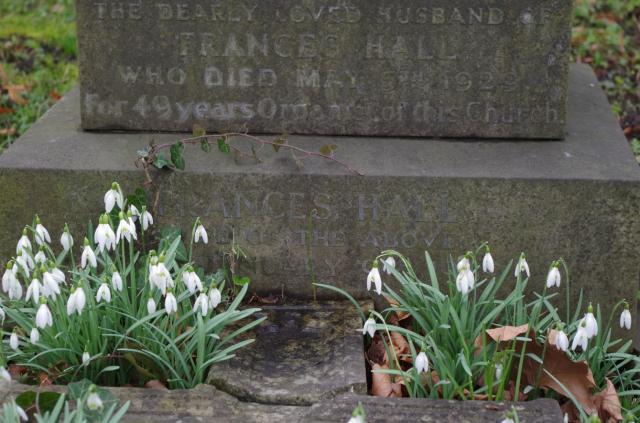

The tombstones in St Margaret’s churchyard, Rochester are arranged like teeth along one wall. It faces out onto the Medway and, if you’ve got the strength, to look over there’s also a steep slope beneath. But it was here that I found the Good Samaritan headstone. Never underestimate the power of a lovely sunny day to really bring out the beauty of a good carving.
A man is depicted on it, lying half naked being comforted by another man while a horse, presumably the victim’s, stands nearby. In the distance two figures, presumably men, walk away with their backs to the scene. It’s a well carved little picture and I immediately thought of Parable of the Good Samaritan.

I am indebted to the Kent Archaeological; Society for the transcript of the epitaph. . Even at 400% magnification, all I could make out was
‘…….Wife….
….this life…
…1777…..
…Children..’
It actually reads:
(In memory of)
Catherine Wife of Will Bromley
Departed this life
The ( ) Feb 1777
aged 33 years
Also Six Children
Will Bromley
departed this life
( ) June 1783 aged 41 years
Also William Gerrad Bromley died
the 30th of January 180(7) aged (36 years)
The Parable of The Good Samaritan comes from the Gospel of Luke, verses 10:25-37 and here is a shortened version taken from the World English Bible:
‘Jesus answered, “A certain man was going down from Jerusalem to Jericho, and he fell among robbers, who both stripped him and beat him, and departed, leaving him half dead. By chance a certain priest was going down that way. When he saw him, he passed by on the other side. In the same way a Levite also, when he came to the place, and saw him, passed by on the other side. But a certain Samaritan, as he travelled, came where he was. When he saw him, he was moved with compassion, came to him, and bound up his wounds, pouring on oil and wine. He set him on his own animal, and brought him to an inn, and took care of him. On the next day, when he departed, he took out two denarii, gave them to the host, and said to him, ‘Take care of him. Whatever you spend beyond that, I will repay you when I return.’ Now which of these three do you think seemed to be a neighbor to him who fell among the robbers?”’
He said, “He who showed mercy on him.”
Then Jesus said to him, “Go and do likewise.”
The Samaritan who stopped to help is described as Good but in reality Jews and Samaritans hated each other. They were known to destroy each other’s temples but few people have heard of the Samaritans nowadays. According to Wikipedia, the parable is now:
‘…….often recast in a more modern setting where the people are ones in equivalent social groups known not to interact comfortably. Thus, cast appropriately, the parable regains its message to modern listeners: namely, that an individual of a social group they disapprove of can exhibit moral behaviour that is superior to individuals of the groups they approve.’
At the time in which the Parable is set, the Jerusalem to Jericho road was known as ‘The Way of Blood’ due to the amount of blood that was spilt on it from attacks on travellers by robbers. It was extremely dangerous. In fact Martin Luther King Jr in his ‘I’ve been to the Mountaintop’ speech given the day before his death, had more sympathy for the Levite and priest who ignored the victim and went on with their journeys. He described the road as:
‘As soon as we got on that road I said to my wife, “I can see why Jesus used this as the setting for his parable.” It’s a winding, meandering road … In the days of Jesus it came to be known as the “Bloody Pass.” And you know, it’s possible that the priest and the Levite looked over that man on the ground and wondered if the robbers were still around. Or it’s possible that they felt that the man on the ground was merely faking, and he was acting like he had been robbed and hurt in order to seize them over there, lure them there for quick and easy seizure. And so the first question that the priest asked, the first question that the Levite asked was, “If I stop to help this man, what will happen to me?’’]
Wikipedia

There are several other interpretations of the Good Samaritan parable and if you are interested you can find them here: https://en.wikipedia.org/wiki/Parable_of_the_Good_Samaritan
The phrase ‘Good Samaritan’ has become part of modern language and denotes someone who helps a stranger. There are several worldwide hospitals named after him and it has inspired art, fiction, photography and sculpture amongst others. This is a 17th century painting from 1647

and here is a modern sculpture from Nova Scotia.

However, the only images that I could find that resembled the headstone carving were from 19th century bibles which were much later than the carving on the headstone. This is taken from the 1875 Children’s Picture Bible Book.

So was the wife or the husband buried in St Margaret’s churchyard the Good Samaritan or was the image chosen to remind the viewer to be one to their fellow men? We may never know.
©Text and photos Carole Tyrrell unless otherwise stated
References and further reading:
https://en.wikipedia.org/wiki/Parable_of_the_Good_Samaritan
https://www.kentarchaeology.org.uk/research/monumental-inscriptions/rochester-st-margarets-church#03


















